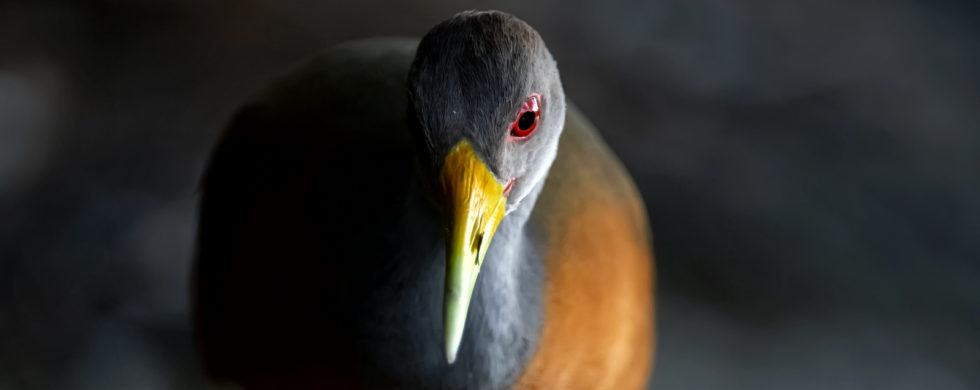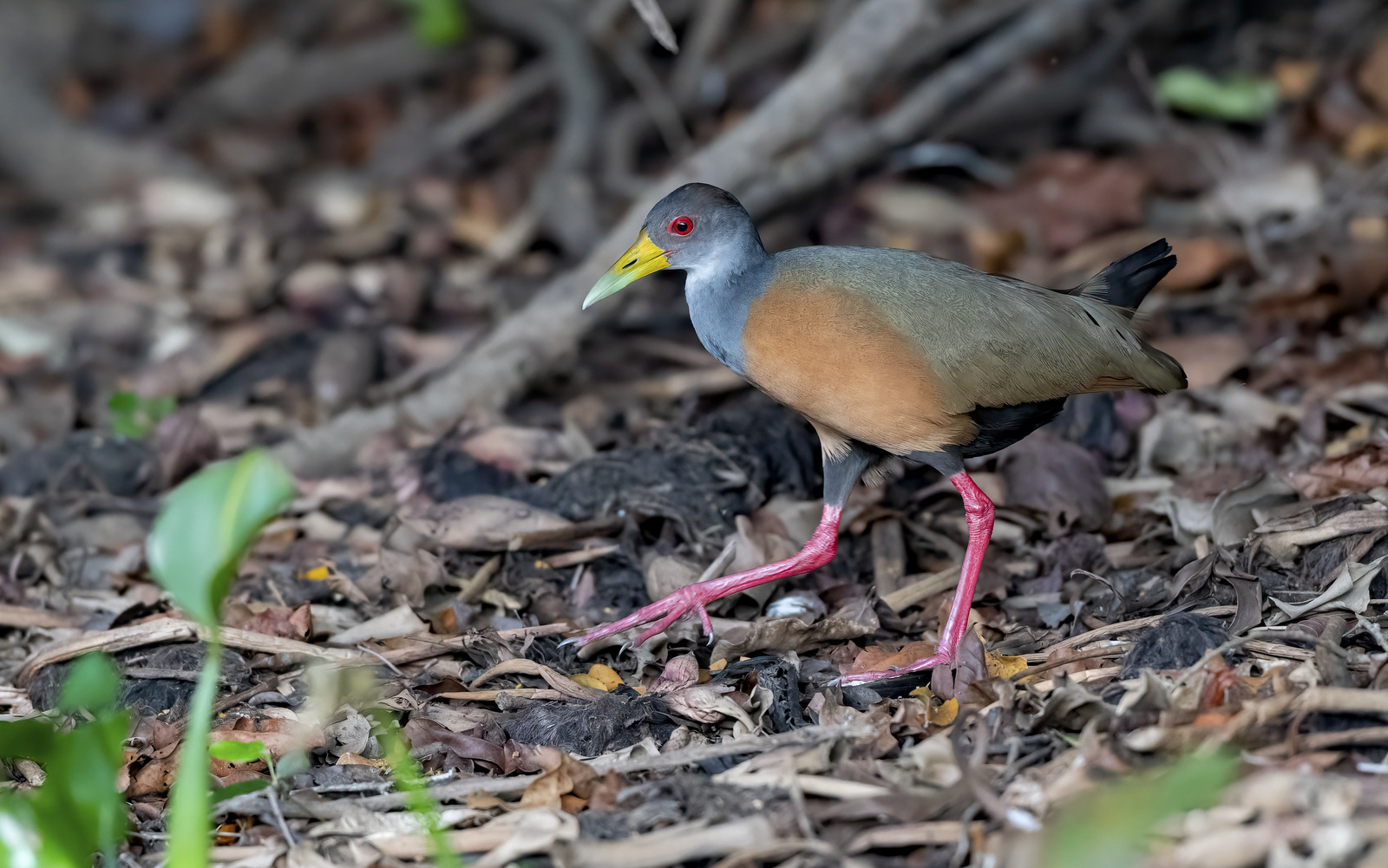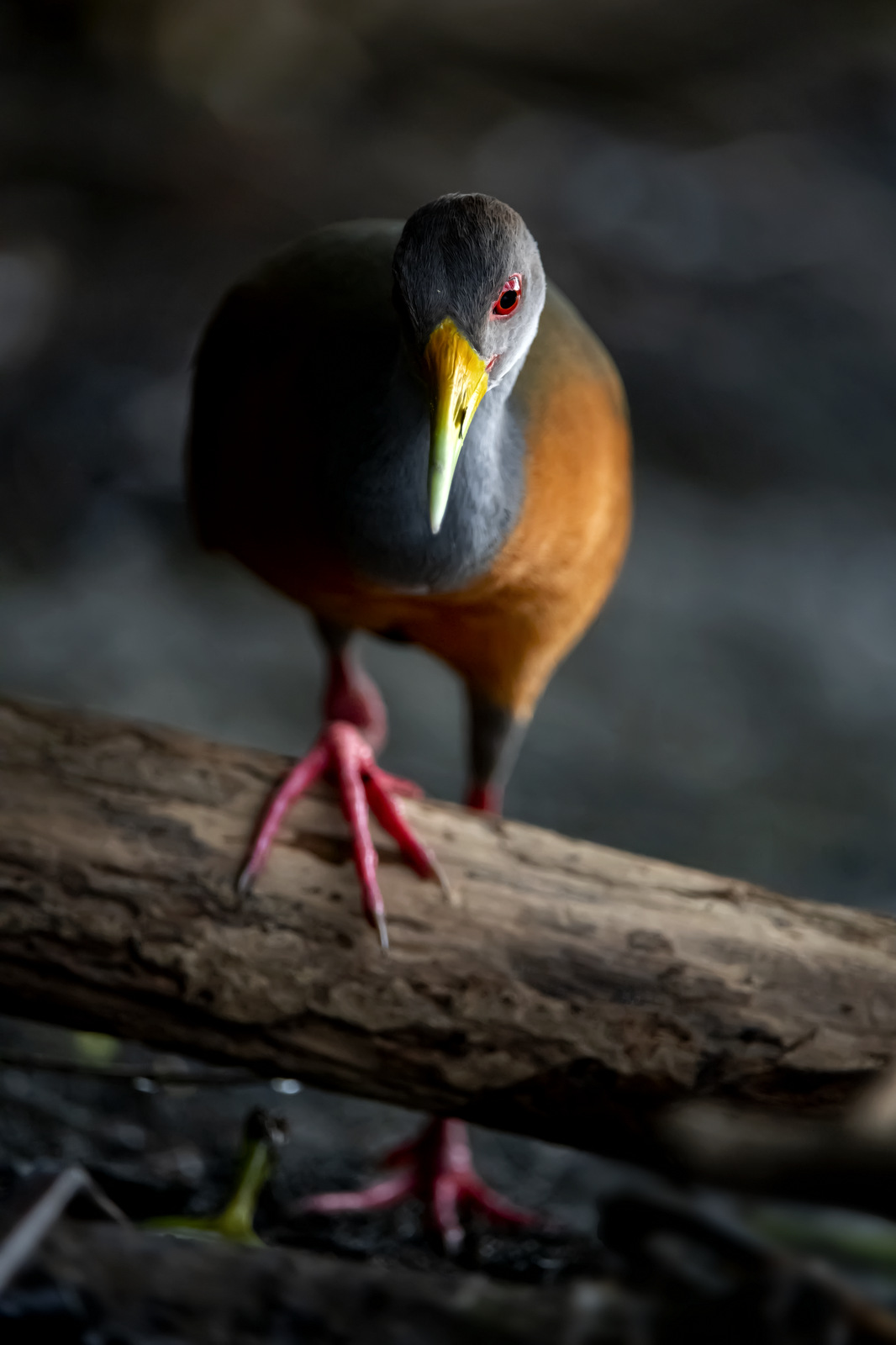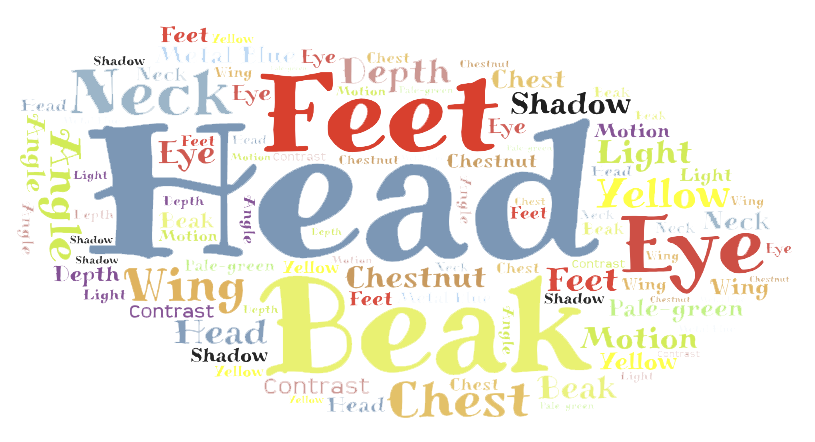
31
2021Fact or Fiction?
Shot of the Month – May 2021
 Above we have a nice image of a Grey-cowled Wood Rail (GCWR). The image is technically sound. The entire bird is in sharp focus allowing us to see the fine detail of each feather. The lighting is even making the exposure relatively easy — no areas of the image are too bright (“blown out”) and no areas that are too dark. The “flat” light ensures that the colors are accurate and pleasing allowing us to see all the beautiful colors of this South American bird.
Above we have a nice image of a Grey-cowled Wood Rail (GCWR). The image is technically sound. The entire bird is in sharp focus allowing us to see the fine detail of each feather. The lighting is even making the exposure relatively easy — no areas of the image are too bright (“blown out”) and no areas that are too dark. The “flat” light ensures that the colors are accurate and pleasing allowing us to see all the beautiful colors of this South American bird.
It’s a good photo.
No really, a really nice image.
It’s a really nice image…………………………………..that is boring.
Ok, that’s not totally fair. It would be a perfect photo to use in a Bird Identification Field Guide — in this image you can see all of the key features of the specimen and verify if it is the bird you saw. In such a book you would learn that the GCWR can be found in the forests, mangroves and swamps of Central and South America. This sounds about right since I photographed this fellow in the Pantanal of Brazil.
In such a reference guide you could learn that rails, birds that are members of the Rallidae family, are small- to medium-sized, ground-living birds. The family includes crakes, coots and gallinules and includes about 150 species of birds. This family of birds is quite diverse and can be found across much of the planet.
It is a great documentation photo and is a good image to start my GCWR portfolio. However, as this fellow sauntered about and zigged and zagged his way among the roots of the trees in the mangrove in search of a meal (most likely looking for crabs, mollusks, arthropods, frogs, seeds, berries, etc.) I managed to capture the shot below:
Wow! Although both images are of the same bird, the visual impact of the two photos could not be more different. In this shot the shallow depth of field produces a dramatic backdrop and produces a real sense of depth. That beak seems to be coming right out of the screen while little else of the bird is in focus. And the lack of definition of those red feet makes me notice them (stare really) much more than in the first image. They’re kinda creeping me out…
The portrait orientation of the image tightly stacks all of the bird’s colors on top of each other into a bewildering cacophony of hues. And the side lighting produces drama and highlights that red eye as it stares ominously at us. The angled root adds to the visual chaos. I find my eye jumping from that red foot on the root to the dramatic hues of the beak, to that red eye, and then to the chestnut body…and back to the foot, and the beak….
While I observe the first image, I feel the second. In the second image the rail becomes almost an abstract representation of a bird as the elements and colors of the bird take on a life of their own.
From the first image to the second we go from documentation to inspiration. Or perhaps from representation to interpretation? From so real to surreal? (I could do this all day, but I think you get the idea…)
Ahh, the wonders of photography — an art that can capture what we see to what we can imagine, or anything in between.
Until next month….michael
Sources:
Nikon D850, Nikon 200-400mm (@350mm), f/4, 1/1000s, ISO 6400


